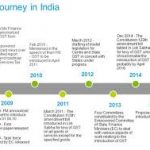- Goods and service tax or GST as it is popularly known is the newest tax system we just come into existence in India from 1st July 2017 .
- GST became A law going through a number of hurdles. it is also taken a long period of time to come through since it is the revaluenashary tax system for a country like india .
- Every one specially those who are in business are interested to known more about it now this is a simple and informative course on GST it Covered only the registration process that the tax payer goes to get tegistered with this new tax system mainly covered the requirement and the process Of GST registration
- I ma an online tutor I book from whom i have been following the progress of this new tax system since the last one year I hope this course will help you in understanding GST and the process of registering from a layman’s perspective before the touching on the topic of GST let me explain very briefly about the indirect tax system that we had in the country and the GST is a rival .
- Infect this explanation will give you an idea about the revolutionary changes that GST is bringing into the tax Management system of our country ever since independence india has been following a two lane structure of direct tax collection in the country. but in effect it was a true structure. explain it. when we take into account the taxes levied by local bodies that is principalities and muncipal corporation along with central government and the taxes levied by the state government it becomes a three legged structure.
- So business is either manufacturing or the services were liable to pay taxes to the union government the central government and the local bodies like one see pallidus because all of these bodies had the independence to collect taxes. in practice there are a number of flaws in the old tax system.
- The primary Couse of most of these flaws was the control of multiple authorities over taxation on a single business entity. my tardies being the central state and local government as i had explained just now.
- let me start a few of these flaws for you .the all the tax structure there are about 17 laws that exited or were in dyadic taxation including the central state government and the effect in the same and taxing of a product or service one way or the other if not all every assissi had to deal with many of these multiple tax authority which included filing of return and annual reports and interacting with officers related to these laws.
- This situation at times made it very difficult for NSC to attend to all the demands of these multiple tax authority. on account of my tax authorities at many instances a product or service was subject to my taxes as they fell under different laws. for example states used to charge rat on the excise duty paid by the manufacture to the central government.so there was tax levied on tax for PERDER and other imperfection of the old system was that the structure did not allow the value addition forced the stage of production.
- One more flow was that the interstate transport of goods were taxed with no provision of input credit to buyers and understand the purchase value of product varied from state to state as the taxation rates vary from state to state. for the same goods ta call an example that Immobile was 5 percent in patna and 14 percent in delhi again there were variation in threshold limits under different laws that Esisted and to call an example.
- under the central excise act the threshold limit for small manufactures was said that rupees 1.5 crores. but under the service tax act the limit was only 10 lakhs. these are buy a few of deficiencies of the task structure. we used to have in the country prior to the introduction of GST to give you a count of multiple tax laws that existed and the confusion and hardships it created for businesses. you should relished that there are many different types of taxes that he had to deal with at the central state and local level administration.
- As I said earlier it was not only about paying taxes to these multiple authorities but keeping different books of congs filing different sets of return and keeping pace with the procedural and legal demands of these multiple authorities. the right side of the newly introduced goods and services tax that is the GST is that it will resolve many of these issues for the taxpayers.
- This can happen because the direct tax structure of the whole country comes under one tax. under this new law, all of the central and state taxes are now amalgamated and the taxes of sento are subsumed. insidious that Is central GST and the taxes of states are subsumed in as GST.
- That is state GST as I said earlier GST is thus the biggest ever indirect tax reform happening in India since independence. GST is clearly a long term strategy. there is no doubt that this new tax structure will lead to a lot of simplification in the tax collection and payment process.it will generate a higher output for industries and bring bigger tax revenue for both central and state governments over a period of time it will bring many industries that are in the informal sector today the formal sector. moreover, it will create more employment opportunities and economic inclusion. but let me also add that in the initial stage it is likely to cause some hiccups it getting the process implemented and it may cause high inflation rates as some experts suggest and definitely higher administrative cost for its implementation.
